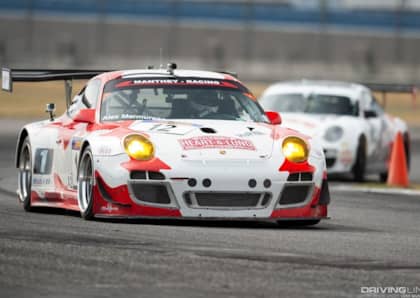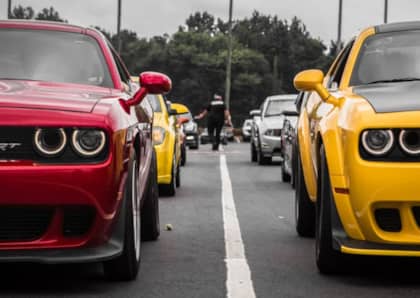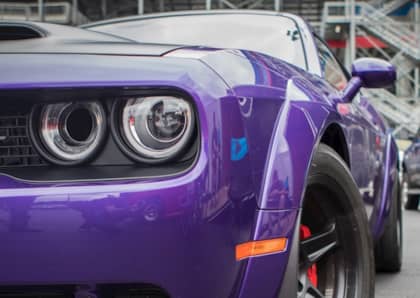Banzai Runners: Cracking the 200 MPH Code on California's Freeways
It might be hard to wrap your mind around in our era of traffic-choked arteries and multi-hour, bumper-to-bumper commutes, but there once was a time when America was gifted with something of an over-capacity when it came to highways and interstates. In the late '70s and early '80s (especially in the western part of the country), there were vast tracks of asphalt that had yet to find peak load, particularly at night after the pavement had cooled.
What could one do with this under-utilized—and under-patrolled—network of roads? Why, get your friends together and build cars with the goal of breaking that elusive 200 mph barrier, of course.
Welcome to the world of the "banzai runners."
Underground Speed
Wait a minute, so that 1987 Dean Stockwell B-movie had an actual basis in reality? Sort of. The name itself was taken from the group of gearheads who were determined to take advantage of the straight, flat stretch of I-15 linking Temecula to Escondido to test out their latest high horsepower engine builds. Taking inspiration from the famous Japanese wartime battle-cry, the banzai runners were sick of the 55 mph speed limit and determined to sample freedom by more than tripling the posted signage restriction during the wee hours of the morning.

For a time, the banzai runners were merely a rumor, a label applied in 1970s to a somewhat secretive bunch of supercharged scofflaws who were content to limit their bragging rights to the in-crowd. Then, right around 1981, the media blitz hit. Articles in magazines like New West and The Associated Press started to pull back at least a little of the curtain hiding the banzai crew from the rest of the world.
Eclectic Crew
You might think that the desire for pure straight-line speed (and for longer durations than a 10-seconds-or-less drag race) would produce some fairly unique vehicle builds, and you would be right. The gang that would show up for their nightly needle-snappings consisted of a mix of import and homegrown exotics, big-block domestics and straight-up race cars that had been modified for street duty.
Some of the notable standouts included a Lola T70 Can-Am body on a T165 chassis owned by the actor Dan Haggerty. With its big block Chevy engine combined with the long-tail coupe body, it had the aero required to beat the less-slippery open-top version's lower terminal velocity. There was also a 1979 Cadillac Seville run by John Ward (the Evil Seville) that sported a 750hp NASCAR-derived big block under the hood, backed by massive race slicks at all four corners.

Then there was the collection of Porsche 930s, Lamborghini Countachs and a rarer-than-rare Vector W2 that would line up to collect their share of high speed glory. For its part, Lamborghini even admitted to customizing the aerodynamics of several of its customer cars expressly so that they could better compete in banzai competition.
Too Fast to Catch
Given the media attention associated with the banzai runner phenomenon, it's only reasonable to ask, "Where were the cops while these 200 mph ticket-me-please races were going on?"
The answer: mostly sitting on the sidelines. When reporters would contact police for comment, the most common reply was that there wasn't a single vehicle in the entire fleet that could keep pace with the speed demons, let along hope to catch them. In one quote from the magazine Californian, an officer revealed that not even the fixed wing aircraft at their disposal could match the velocity of the banzai runners. Given that the races only took place at night, and in largely empty areas where few, if any, drivers were on the road, a live and let live attitude held the peace for many years between the quick and the cops.

The March of Progress
While it's true that helicopters, video surveillance and improved communications have dramatically boosted the ability of the police to keep a handle on high speed hi-jinks, the eventual banzai killer didn't have anything to do with fines, jail time or radar. In fact, the banzai runs were hit by the same death knell that sounded for the Mulholland racers and Cannonballers that had embodied a similar spirit of rebellion: traffic.
Urban sprawl, driven by the huge number of people migrating to California to take advantage of the jobs and sunny postcard lifestyle eventually filled up the roads at almost every hour of the day, making it impossible to find enough clear pavement to get a good—and safe—run in. This means that although there are far more cars available now that could brush up against the double-ton (even some reasonably affordable models like the Dodge Charger SRT Hellcat that you can drive home from a dealership with a full warranty), there are simply fewer and fewer places to do so that aren't surrounded on all sides by desert, cornfields or empty plains. Even those once-remote sections of road in Nevada and Montana are increasingly victimized by the constant push to build, expand and populate remote areas of the country.
While there are still fun runs, speed chasers and the occasional public highway shut down for charity or rallying taking place today, the idea of an underground group regularly testing the limits of both physics and their own luck has largely receded into legend. The banzai runners have become a token of a time when your top speed was largely limited by your budget, the fuel in your tank and your ability to ignore the ever-present specter of disaster lurking under your right foot.











